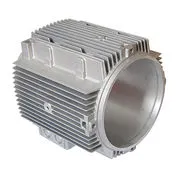Handy, Mobiltelefon:+86-311-808-126-83
Email:info@ydcastings.com
Function and Characteristics of Valve Body
As the core component of valves, the Ventilkörper plays a crucial role in fluid control systems in terms of its functions and characteristics. The following is an official language explanation of the valve body's functions and features.

Function of Valve Body
Fluid control: The Ventilkörper, as the main load-bearing component of the valve, achieves precise control of fluid flow direction, pressure, and flow rate through the collaborative action of internal valve discs, valve seats, and other components. This is the most basic and core function of the valve body, directly related to the stability and efficiency of the entire fluid system.
Sealed isolation: The internal structure of the Ventilkörper is well-designed and tightly matched with sealing elements such as valve discs and seats, forming a reliable sealing system. This function ensures effective isolation of fluids in specific areas, preventing leakage and mixing, and ensuring the safety and purity of the fluid system.
Pressure bearing: The Ventilkörper needs to have a certain strength and stiffness to withstand the pressure generated by the fluid medium in the pipeline. According to different usage scenarios and pressure levels, the Ventilkörper adopts different materials and manufacturing processes to ensure stable operation in high-pressure environments.
Characteristics of Valve Body
Diversity: Ventilkörper exhibit diverse forms and materials based on valve types, fluid media, and working pressures. For example, materials such as cast iron, cast steel, and stainless steel are widely used in different fields to meet different usage needs.
High precision: Modern Ventilkörper design pursues high precision to ensure precise flow control during valve opening and closing processes. This requires that the fitting clearance between various components inside the valve body, as well as the flatness of the sealing surface, all meet extremely high precision standards.
Corrosion resistance: For corrosive media, Ventilkörper are often made of corrosion-resistant materials such as stainless steel, or their corrosion resistance is improved through surface treatments such as nickel plating and spray coating. This feature enables the Ventilkörper to maintain good working condition in corrosive media environments such as chemical and petroleum.
High temperature resistance: Some valve bodies need to withstand the impact of high-temperature fluids, so they need to have good high temperature resistance performance. High temperature valve bodies are usually made of high-temperature resistant materials and treated with special processes to improve their thermal stability and thermal conductivity.
Long lifespan: The design and manufacturing process of the Ventilkörper fully considers factors such as wear resistance and impact resistance to ensure that it can maintain good performance and stability during long-term use. Meanwhile, proper maintenance and upkeep can further extend the service life of the Ventilkörper.
In summary, as a key component of valves, the Ventilkörper plays a crucial role in fluid control systems. Its diverse forms, high-precision design, corrosion resistance and high temperature resistance, as well as long service life, together form the foundation of excellent valve performance.
As a specially in metal castings , our business scope is very broad .We have valve body , steam valve , impeller , volute casing , pump body , end cap , automobile water pump , motor housings and Metallgussteile and so on . The Ventilkörper price in our company are reasonable . If you are interesting in our product welcome to contact us !
-
Materials Used in Manufacturing Cap End Pipe FittingsNachrichtNov.24,2025
-
Material Properties of CF8M CastingNachrichtNov.24,2025
-
How to Inspect Pump Cap Ends for DamageNachrichtNov.21,2025
-
Backward Curved Impeller – Efficient Airflow Solutions for Industry | YD CastingsNachrichtNov.21,2025
-
Automobile Water Pump - Efficient, Quiet, Durable & ElectricNachrichtNov.21,2025
-
Impeller for Pumps – High-Efficiency, Durable, OEM-ReadyNachrichtNov.21,2025











